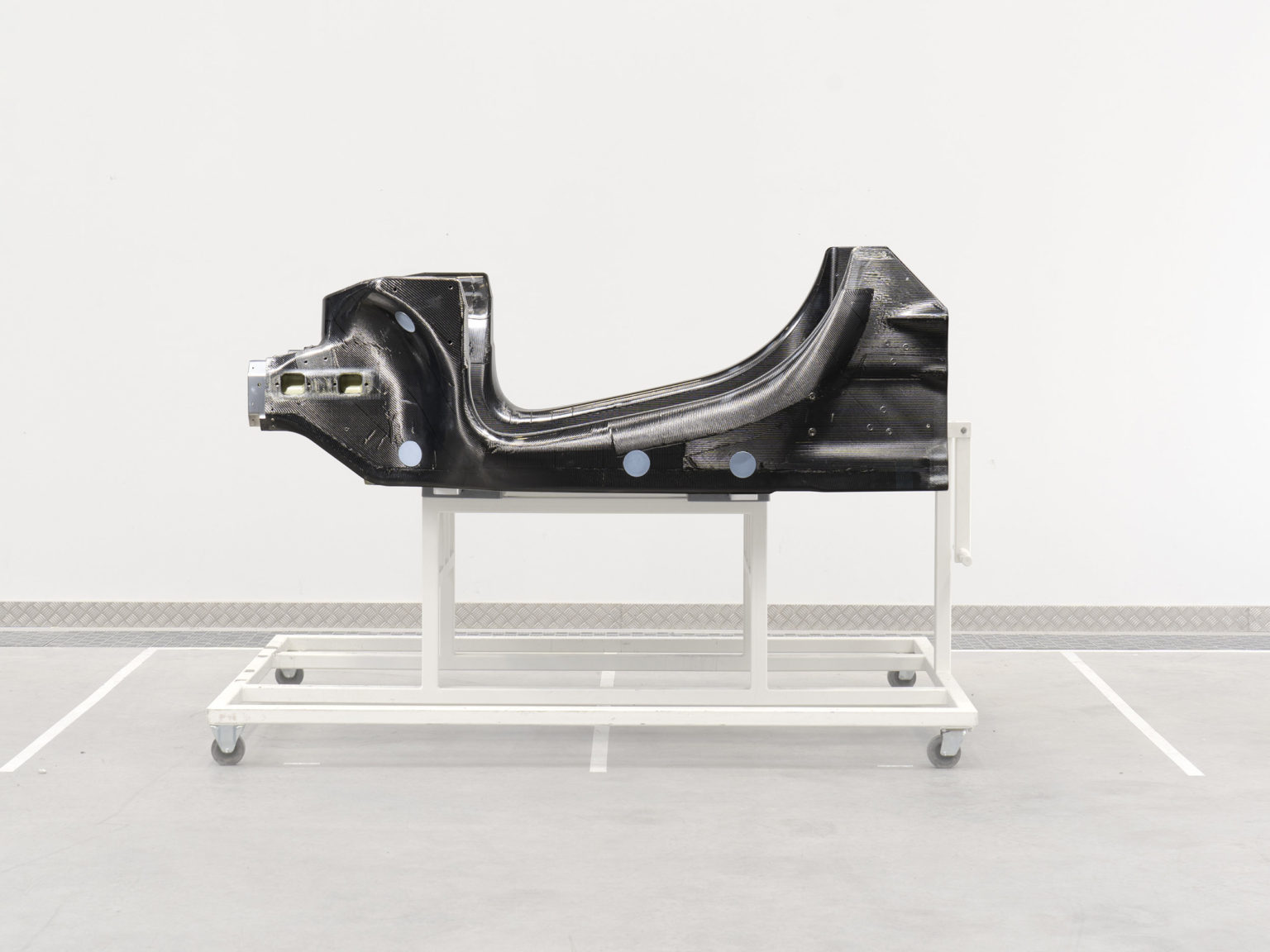They took it off. They took it all off. McLaren has peeled back the skin on its in-development hybrid supercar and shown the world its underthings. Specifically, a next generation of architecture that will underpin a new series of electrified supercars of the future.
The new architecture is lightweight and flexible – designed to house hybrid powertrains. It was produced by McLaren at their £50m state-of-the-art McLaren Composites Technology Centre near Sheffield, England.
The company says that the architecture utilizes “innovative, world-first processes and techniques”. These engineering advances are emanated to reduce excess mass and overall weight of the models while improving the architecture’s safety attributes.
Photo courtesy of McLaren Automotive
“The new ground-breaking vehicle architecture is every bit as revolutionary as the MonoCell chassis we introduced with the company’s first car, the 12C, when we first embarked on making production vehicles a decade ago,” said Mike Flewitt, Chief Executive Officer, McLaren Automotive.
“This new, ultra-lightweight carbon fibre chassis boasts greater structural integrity and higher levels of quality than ever before with our new MCTC facility quickly becoming recognised as a global centre of excellence in composite materials science and manufacturing.
“Our advanced expertise in light weight composites processes and manufacturing combined with our experience in cutting-edge battery technology and high-performance hybrid propulsion systems means we are ideally placed to deliver to customers levels of electrified high-performance motoring that until now have simply been unattainable.”
The architecture’s production process features five major steps. First, hundreds of pieces of carbon fiber are cut. Then, lasers guide the alignment of the cut material onto 2D platforms. From there, the platforms are loaded into a resin transfer mold and resin is injected while the parts are clamped together under high pressure.
The molded chassis is then removed and machined to be a perfect fit for the powertrain and other components that are part of the model’s final assembly.
The first McLaren hybrid supercar that will be based on the new architecture will launch in 2021.








